2022 Mitsubishi Outlander: Beyond Badge Engineering

Mitsubishi revealed the all-new 2022 Outlander utility vehicle over the internet last night. In fact, the automaker almost made as big of a fuss about this being the first car showcased via Amazon Live as it did its new SUV. It’s the kind of thing that really makes you wonder where an automaker’s priorities are located, though tech monopolies giants are so deeply ingrained in modern businesses that one hardly notices anymore. But we’re digressing before we’ve even started discussing the new Mitsubishi Outlander.
While the manufacturer can certainly be faulted for letting go of the most interesting aspects of the brand, its core values have remained mostly intact. The 2022 Outlander remains the only vehicle in its segment to offer standard third-row seating, though past experiences with the model presumes that it will only be useful for children and exceptionally small adults. But we’re not sure if that makes up Mitsubishi keeping its MSRP dangerously close to its highly competent rivals when the outgoing model under impressed with its budget-built interior. Honda’s CR-V and even Nissan’s Rogue have felt like substantially nicer products from inside the cabin. Fortunately, that’s one of the big issues the 2022 model-year Outlander was hoping to address.
Sadly, this had to be done by borrowing the Rogue’s platform and powertrain. That presumably means 181 horsepower and 181 pound-feet of torque (Mitsubishi was careful to downplay the Nissan connection) in a segment littered with slow, dull to drive, but incredibly well-rounded utility vehicles. We’re dubious that the incoming Outlander’s driving experience will stray too far from the adequate Rogue once tested. Though it’s likely to stand out when parked beside one until the novelty wears off, meaning the three-diamond brand had to do more to set itself apart. If the new Outlander is just another badge-engineered product, it’s likely to be one of the best examples of showing how far that concept can take you.
“Based on the product concept ‘I-Fu-Do-Do,’ which means authentic and majestic in Japanese, the all-new Outlander has been crafted into a reliable SUV with significantly upgraded styling, road performance, and a high-quality feel to satisfy the needs of customers who want to expand their horizons and take on challenges of every kind,” Takao Kato, chief executive officer of MMC, stated. “With the launch of the all-new Outlander, we will first expand our sales in the North American market and then aim for global growth.”
Japanese phrases that sound like a toddler asking to be taken to the bathroom aside, Mitsubishi has indeed made the Outlander more elegant. While bordering on ostentatious from certain angles, it’s a much more interesting design compared to the outgoing model and has an upscale vibe that doesn’t seem to match its value pricing. Though we’re also wondering how the plasti-chrome will hold up after a few seasons of being parked in direct sunlight. Still, the floating roof, fat D-pillar, 20-inch wheels (18 inches is standard), and thin tail/headlamps (even if the latter are just for aesthetics) modernize the vehicle.
The Rogue connections become more obvious when looking at the interior, though not wholly derivative. The Outlander preferers 90-degree angles to the Nissan’s penchant for 45-degree bends. While this perhaps makes Mitsubishi somewhat unique vs the competition, it doesn’t appear to be the more ergonomic choice. We’ll know if that hunch turned out to be correct after some wheel time. The rest is about what you’d expect. A high-mounted tablet takes care of most of the vehicle’s non-essential functions while an HVAC control system sits just above the squared-off shift knob.
It’s not going to be everyone’s cup of tea but it’s lightyears better than the interiors found in existing Outlanders and Mitsubishi is ready to sweeten the pot further with an available 12.3-inch digital instrument cluster. Want wireless smartphone charging capability with more USB ports, Android Auto, and wireless Apple CarPlay? The first item can be added and the rest is standard.
The brand’s MI-PILOT Assist driver assistance suite with adaptive cruise control and lane-keep assist, semi-aniline leather seating, integrated navigation, a 10.8-inch color head-up display, Mitsubishi Connect smart-car system, and 10-speaker Bose audio system are likewise available if you’re prepared to climb the trim ladder.
While this may just help in shaping the SUV into a more adequate machine on paper, Mitsubishi believes it can take things over the top by having tuned the all-wheel-drive system to perfection. Front-drive is standard but the company wants to push its own rally-derived Super All-Wheel Control system, which adds some additional drive modes not found on the base model.
Mitsubishi wanted to make it clear that the 2022 Outlander will drive substantially better than the current model, but this is another item we’ll have to reserve judgment on until it has been tested. We’re also going to have to wait to see what happens with the PHEV. As of now, the company plans on selling a hybrid option on the older platform unchanged — with the likelihood of a new version being unveiled in a year or two. The 2022 model-year Outlander will go on sale this April, with Mitsubishi promising to fill in the gaps left by the incredibly dull Amazon Live presentation prior to launch.
[Images: Mitsubishi]

A staunch consumer advocate tracking industry trends and regulation. Before joining TTAC, Matt spent a decade working for marketing and research firms based in NYC. Clients included several of the world’s largest automakers, global tire brands, and aftermarket part suppliers. Dissatisfied with the corporate world and resentful of having to wear suits everyday, he pivoted to writing about cars. Since then, that man has become an ardent supporter of the right-to-repair movement, been interviewed on the auto industry by national radio broadcasts, driven more rental cars than anyone ever should, participated in amateur rallying events, and received the requisite minimum training as sanctioned by the SCCA. Handy with a wrench, Matt grew up surrounded by Detroit auto workers and managed to get a pizza delivery job before he was legally eligible. He later found himself driving box trucks through Manhattan, guaranteeing future sympathy for actual truckers. He continues to conduct research pertaining to the automotive sector as an independent contractor and has since moved back to his native Michigan, closer to where the cars are born. A contrarian, Matt claims to prefer understeer — stating that front and all-wheel drive vehicles cater best to his driving style.
More by Matt Posky
Latest Car Reviews
Read moreLatest Product Reviews
Read moreRecent Comments
- THX1136 A Mr. J. Sangburg, professional manicurist, rust repairer and 3 times survivor is hoping to get in on the bottom level of this magnificent property. He has designs to open a tea shop and used auto parts store in the facility as soon as there is affordable space available. He has stated, for the record, "You ain't seen anything yet and you probably won't." Always one for understatement, Mr. Sangburg hasn't been forthcoming with any more information at this time. You can follow the any further developments @GotItFiguredOut.net.
- TheEndlessEnigma And yet government continues to grow....
- TheEndlessEnigma Not only do I not care about the move, I do not care about GM....gm...or whatever it calls itself.
- Redapple2 As stated above, gm now is not the GM of old. They say it themselves without realizing it. New logo: GM > gm. As much as I dislike my benefactor (gm spent ~ $200,000 on my BS and MS) I try to be fair, a smart business makes timely decisions based on the reality of the current (and future estimates) situation. The move is a good one.
- Dave M. After an 19-month wait, I finally got my Lariat hybrid in January. It's everything I expected and more for my $35k. The interior is more than adequate for my needs, and I greatly enjoy all the safety features present, which I didn't have on my "old" car (2013 Outback). It's solidly built, and I'm averaging 45-50 mpgs on my 30 mile daily commute (35-75 mph); I took my first road trip last weekend and averaged 35 mpgs at 75-80 mph. Wishes? Memory seats, ventilated seats, and Homelink. Overall I'm very pleased and impressed. It's my first American branded car in my 45 years of buying new cars. Usually I'm a J-VIN kind of guy....
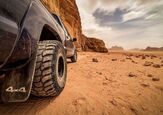








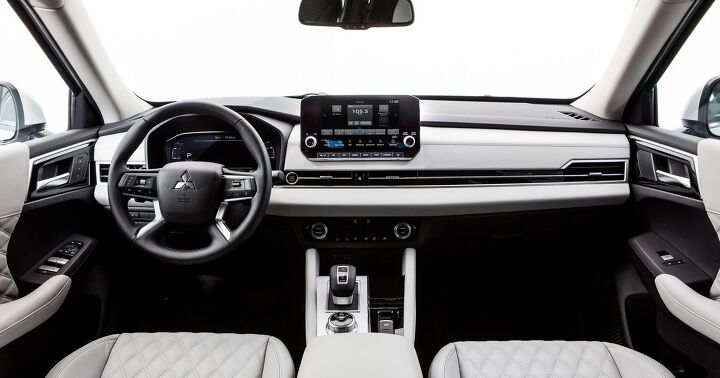
















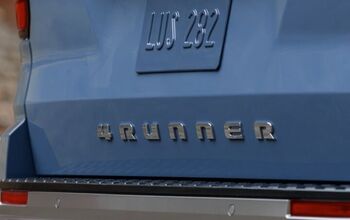



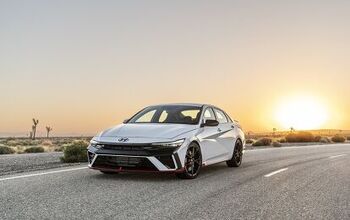










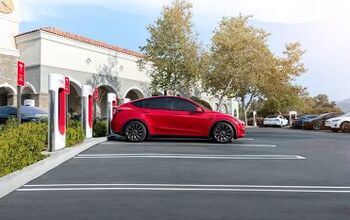
Comments
Join the conversation
"Japanese phrases that sound like a toddler asking to be taken to the bathroom aside," Was that comment really necessary? Maybe a little respect for other people's language is in order? Pretty unprofessional.
How a charging station would be added to the parking lot of my apartment is a total mystery to me. Who will pay for them? Me? Well, I don't expect to be around in 10 years, so it will probably not apply to me, but how electric cars are going to work for apartment dwellers who have outdoor parking will be interesting.